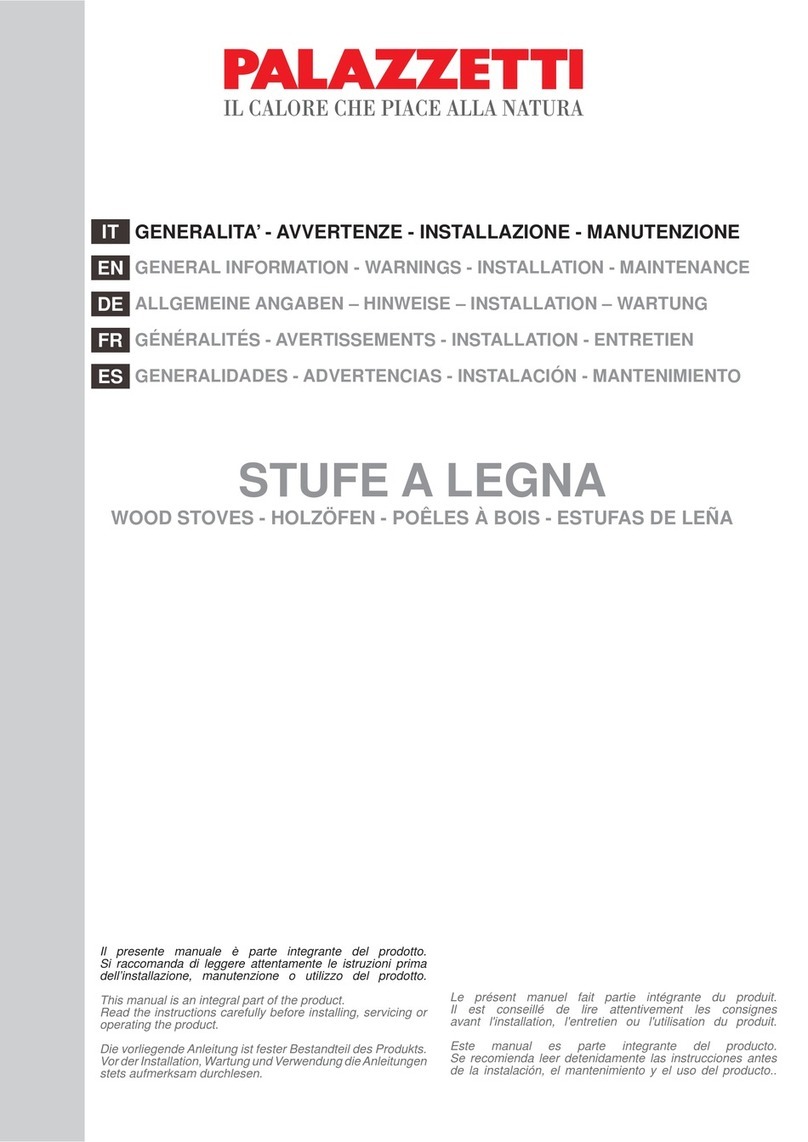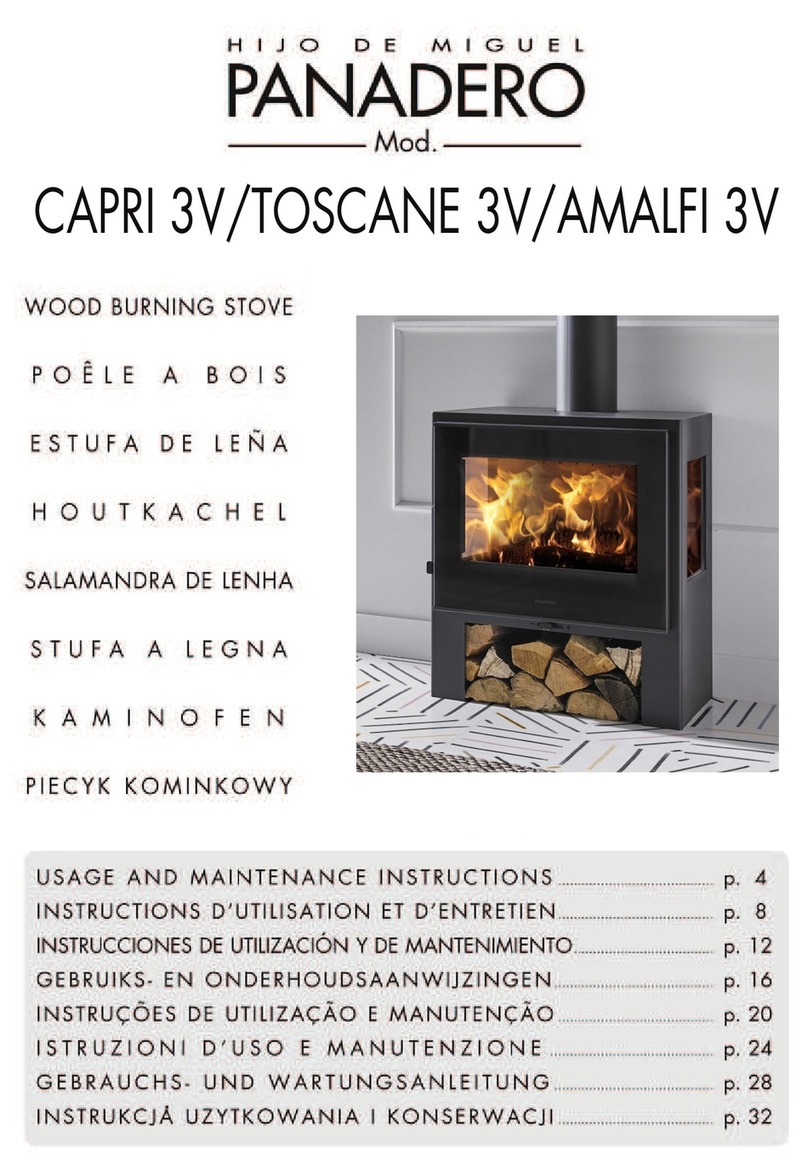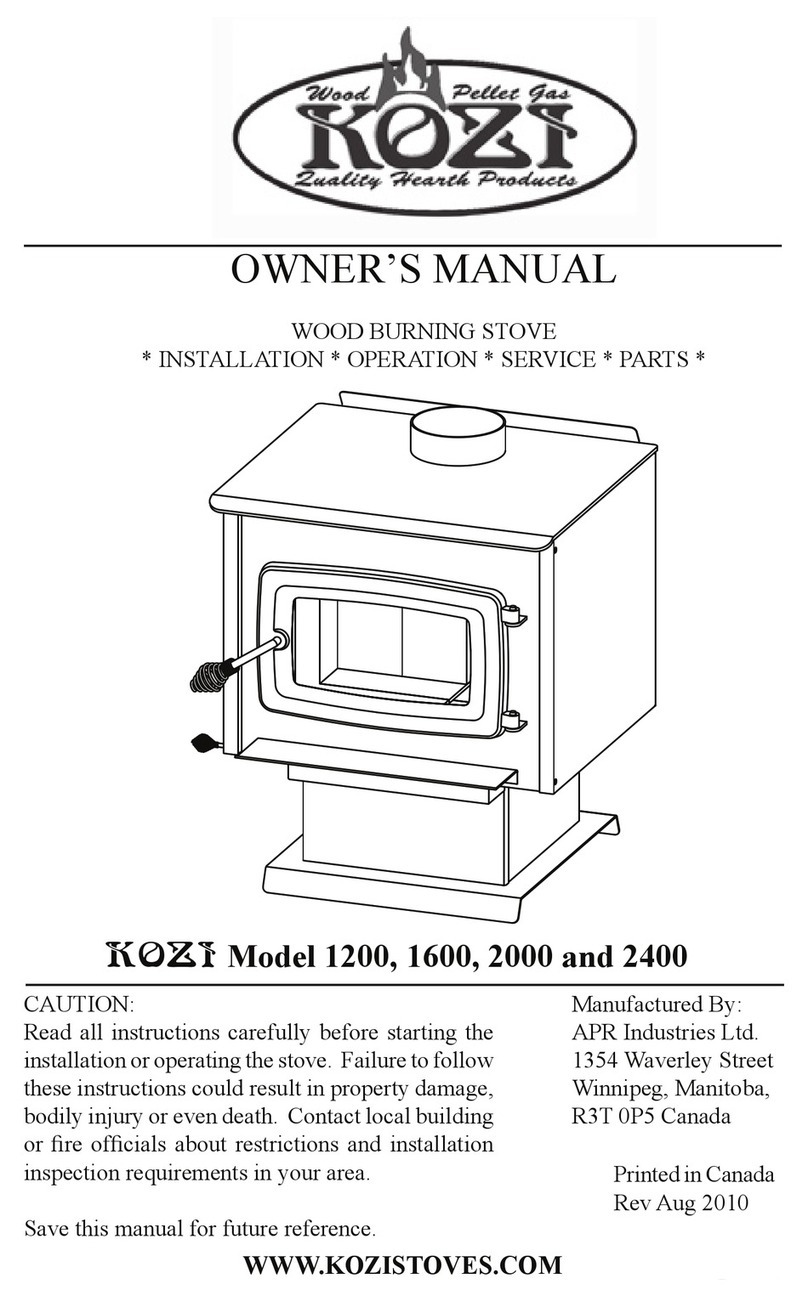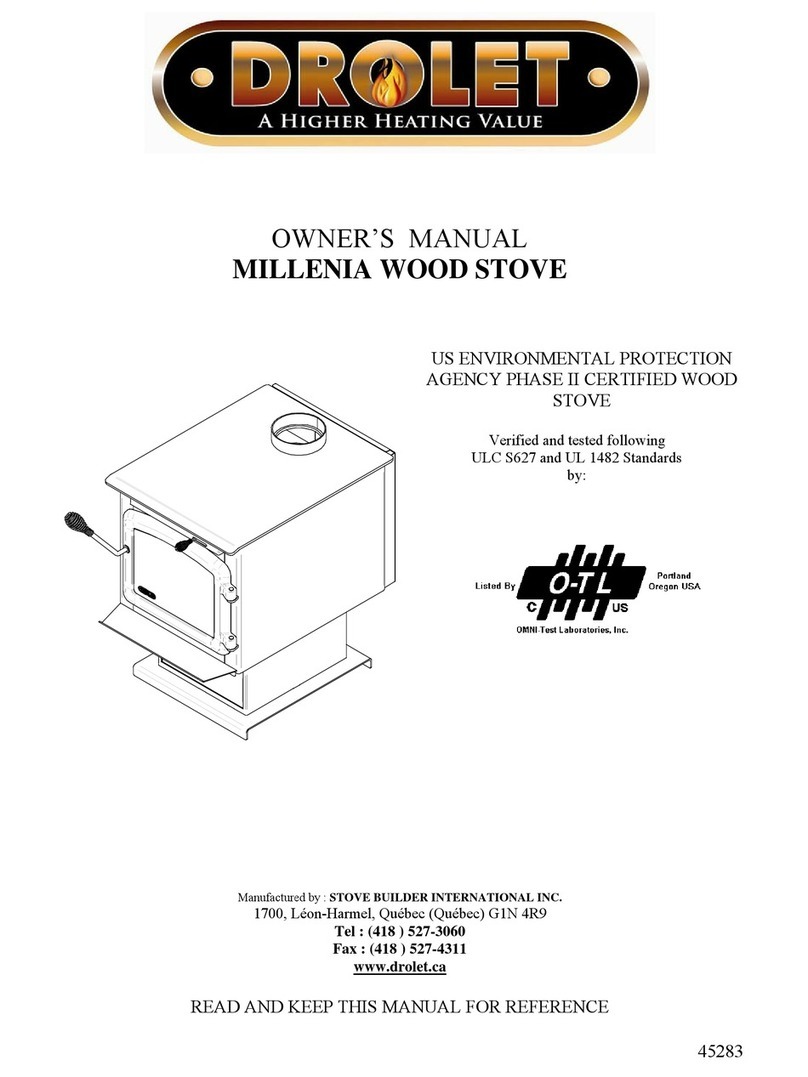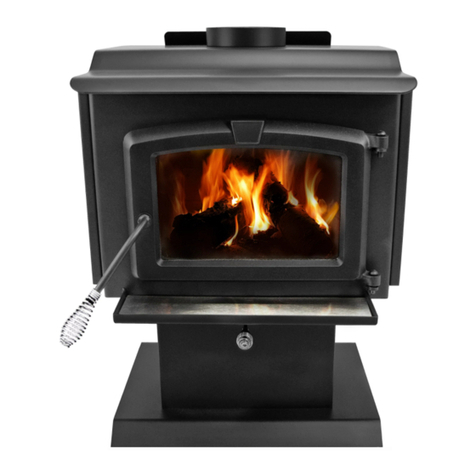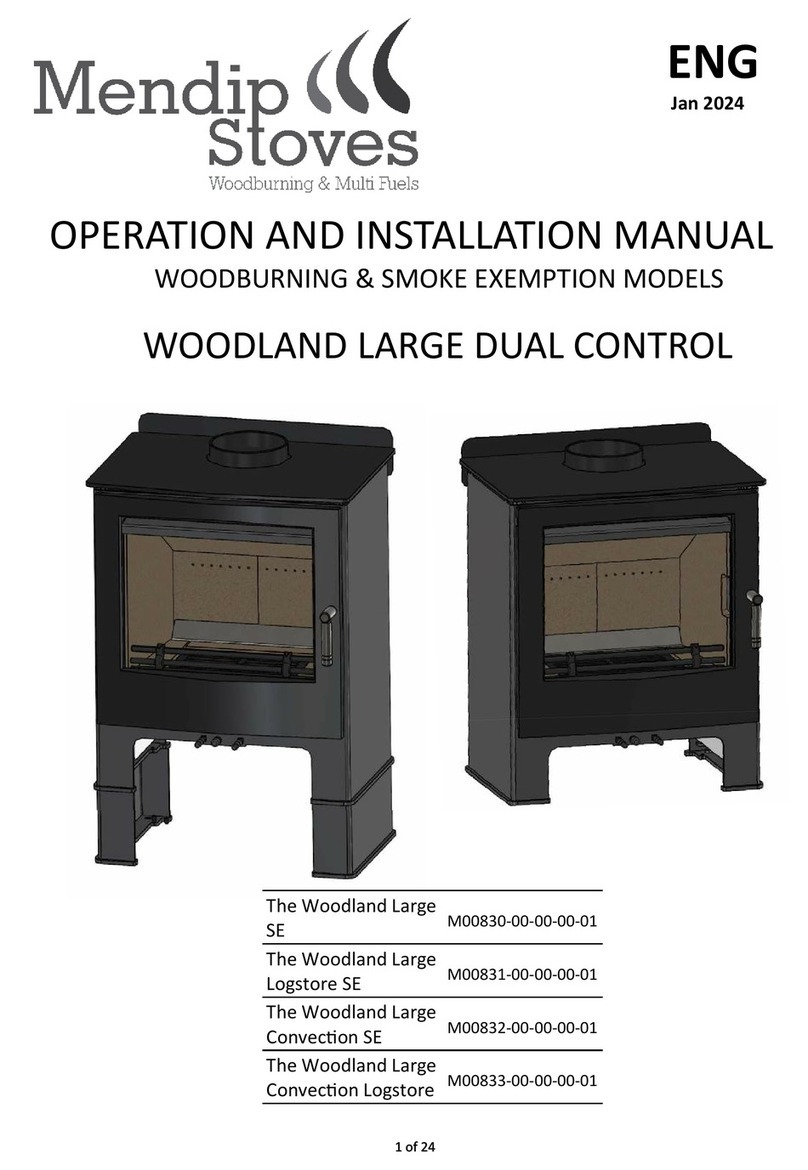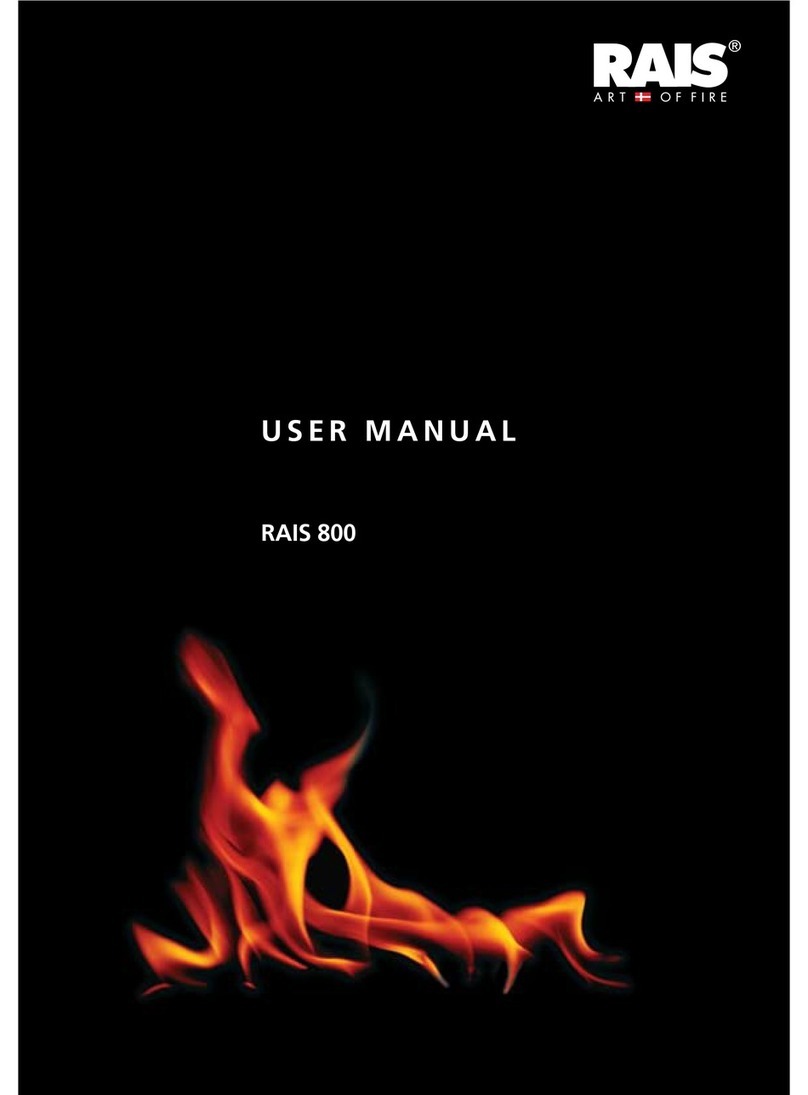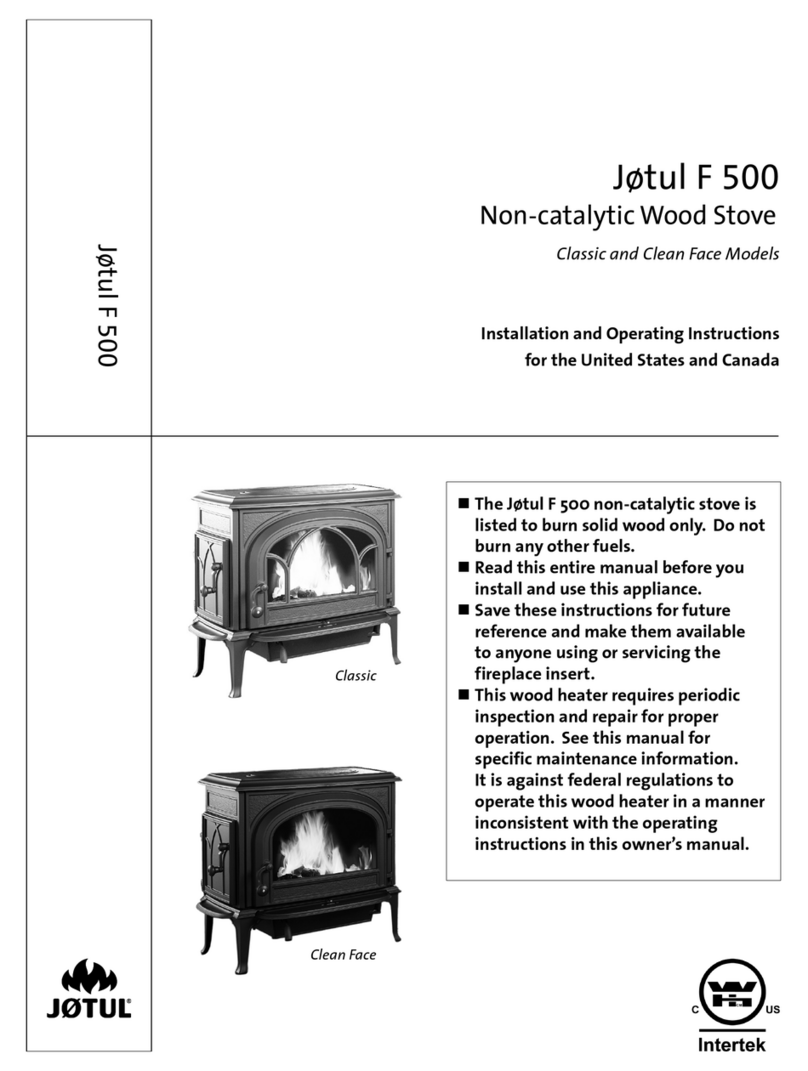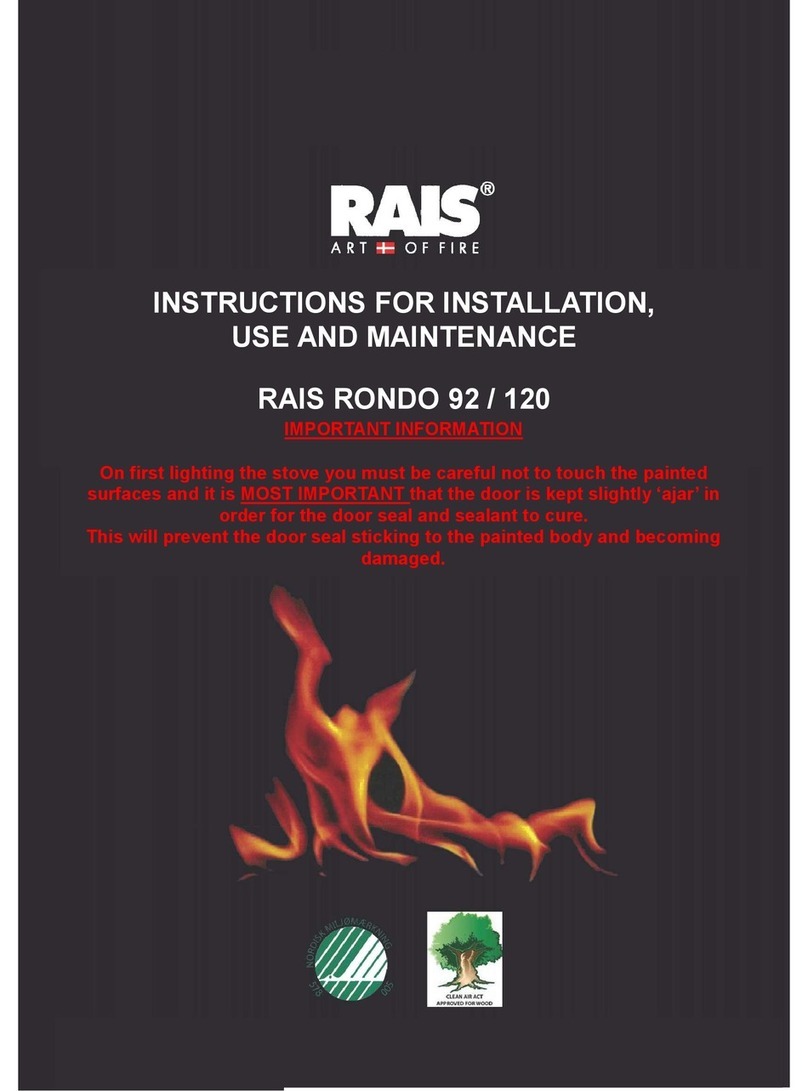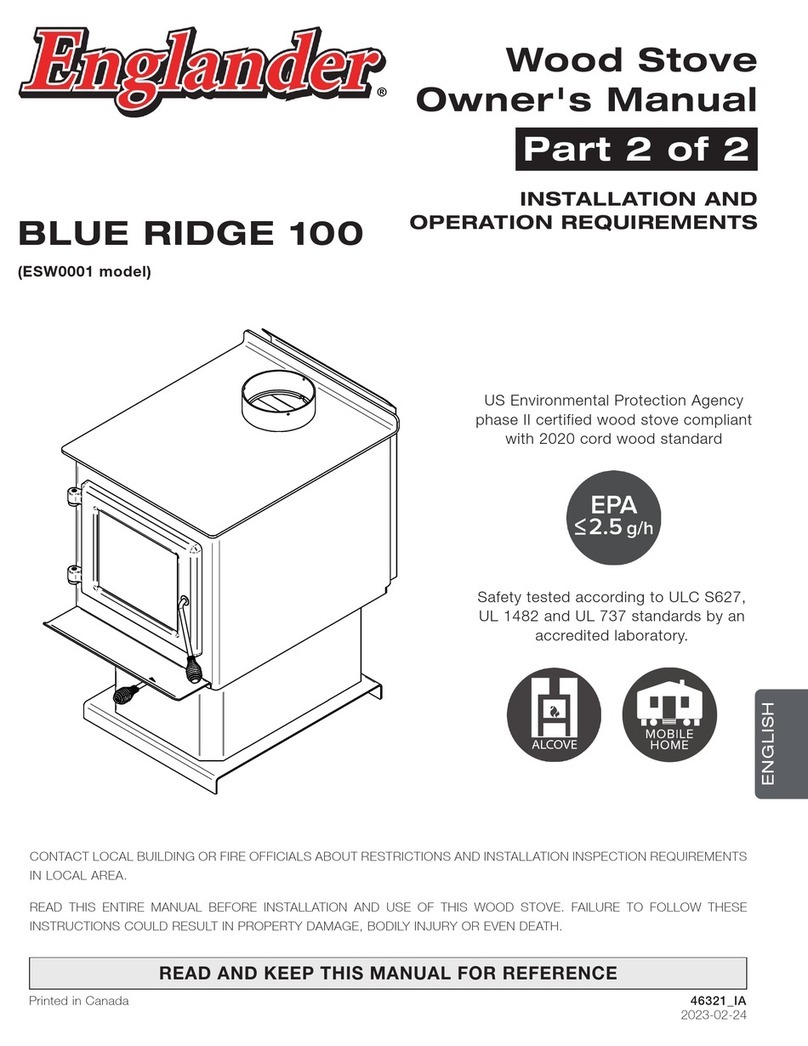
SECTION 1
Important Information
SECTION 1 3
Please read section carefully before the
installation is started
INSTALLER RESPOSIBILITY
Under the Health & Safety at Work act 1974 all
installation work must be carried out in such a way
as to ensure that there is not danger to the installer
or to others
ASBESTOS AWARENESS
Particular attention should be given to the possibility
of disturbing asbestos in existing installations.
Asbestos should only be removed by a registered
Specialist.
THE USE OF FIRE CEMENT
Attention should be given to caustic nature of fire
cement it is advised that protection gloves are worn,
and any fire cement that comes into contact with
skin is washed off thoroughly with water without
delay. Care should be taken not to get fire cement
on the body of the stove.
INSTALLATION COMPLIANCE
Stoves
The stove should be installed in accordance with:
BS8303: Code of Practice for the installation of
domestic heating and cooking
appliances burning solid mineral fuels
BS6461: Installation of chimneys and flues for
domestic appliances burning solid
fuels including wood and peat
All solid fuel and woodburning stoves must be
installed by a competent person, in compliance with
all National and local Building Regulations and
codes of practice, including European standards
where appropriate. HETAS® maintains a list of
registered solid fuel installers we will be pleased to
supply details if necessary. Many Villager dealers
have their own installers or should be able to
recommend a suitable installer.
An extractor fan must not be fitted in the same room
as the stove as it can stop the chimney from
drawing correctly.
The stove must not be modified in any way
without our express permission, any
unauthorised modification will invalidate the
guarantee.
If you are installing a stove in a boat, caravan or
mobile home or other mobile structure, it is very
important to realise the potential fire risks present in
such installations.
1, The stove must stand on a non combustible
hearth which is suitably insulated from any
combustible materials
2, The stove must be suitably insulated from
materials around and above the stove.
3, The stove pipe must be suitably insulated
any combustible material in particular where
the flue passes though the roof. Special -
fittings are available from ships chandlers and
caravan dealers for roof penetration
4, The stove and the flue pipe must be securely
fixed in position.
5, Ventilation must be provided with fixed
permanently open vents
6, Store flammable liquids, gas bottles, aerosols
materials, etc, well away from the stove
7, The stove should never be alight when the
boat /caravan is in motion - the stove must be
cool or cold, with doors securely shut.
NOTE:
A useful insulating material for such
installations is ceramic fibre board, which can be
sandwiched between a fireproof facing board and the
combustible material - but note that it is not suitable
for use in damp or wet situations. This material is
available in various thicknesses - and has excellent
thermal insulation properties.
The Chimney
The chimney used should be in accordance with:
BS 6461: Installation of chimneys and flues for
domestic appliances burning solid fuel,
including wood and peat. This type of
chimney is often referred to as Class 1.
The chimney should not be less than 4 metres (13ft)
in length, measured vertically from the top of the
stove to the chimney and should terminate at least 1
metre above roof level
Note:
Do not include any horizontal runs in rear flue
entry connection to the vertical length of chimney
The flue connected to the stove must be at least the
same diameter as the outlet on the stove, 152/6” or
127mm/5” on series 2 and Chelsea Solo/Duo.
Please note:
If a liner is to be installed it must be a minimum of
152mm/6” diameter if wood is the fuel being used.
Prior to installation, the chimney must be swept and
examined for soundness and suitability. Chimneys
with large cross sectional area may not be suitable
unless an insulated solid fuel liner is fitted. Any faults
must be rectified prior to stove installation. If in doubt
seek expert advice from your Villager dealer/installer.
Prefabricated block chimneys or twin walled stainless
steel flues , manufactured to BS4543 can be used,
but must be installed in accordance with the
manufacturers instructions and building regulations.
Your Villager stove is not suitable for connection to a
shared chimney, it will not draw properly.
Flue Damper
We can supply a flue damper kit as an optional extra
to the appliance, which will give additional control
over the flue draught and therefore the burn rate of
the appliance. A damper be beneficial in installations
Where a high flue draught is present and in cases



